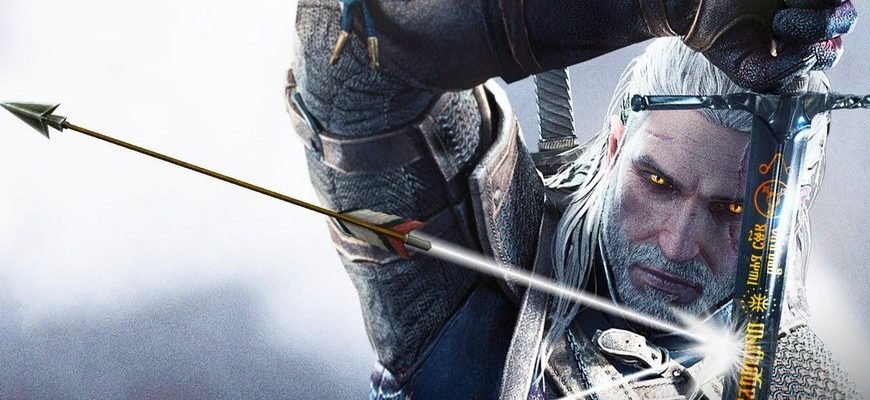The Witcher 3: Wild Hunt is a game that continues to captivate players with its intricate gameplay and expansive world. Within its realm, the “Hearts of Stone” expansion introduces an enchanting system that allows players to augment their equipment with powerful runes and glyphs. This guide will delve into the mechanics of item enchantment in The Witcher 3, detailing how to enchant items, which stones to use, and the various benefits these enchantments provide.
Unlocking Enchantments
To begin enchanting items in The Witcher 3, players must first unlock the Runewright, a specialist who can apply enchantments to Geralt’s equipment. This process involves a questline that includes the following steps:
- Find the Notice: Head to the Seven Cats Inn notice board to pick up a notice left by the Runewright, starting the quest “Enchanting: Start-up Costs.”
- Visit the Runewright: Alternatively, visit the Runewright directly at Upper Mill in the northeastern corner of the map.
- Financing: Front the startup costs of 5,000 crowns to cover the Runewright’s expenses and retrieve his enchanting tools.
- Collect Jade: Retrieve a chunk of jade from Bloodrot Pit to complete the quest “Enchanting: Quality Has Its Price.”
- Upgrade Levels: The Runewright’s services can be further upgraded by paying additional amounts: 10,000 crowns for level 2 and 15,000 crowns for level 3.
Once these steps are completed, players can begin enchanting their items with runes and glyphs.
Mechanics of Enchanting
Enchantments in The Witcher 3 come in two forms: runewords (for weapons) and glyphwords (for armor). Each enchantment provides unique benefits that can significantly enhance Geralt’s combat effectiveness.
General Tips
- Runewords and glyphwords can only be applied to swords and chest armor with at least three slots.
- The Runewright can add up to three slots to swords and chest armor for a fee.
- Enchantments will destroy any existing upgrades on the item and fill all upgrade slots, preventing the addition of new runes or glyphs later.
- If Witcher gear is upgraded to a higher tier, the enchantments will be removed in the process.
Runewords (Weapon Enchantments)
Runewords are enchantments that can be applied to swords, providing new abilities or enhancing existing ones. Here is a comprehensive list of the runewords available in The Witcher 3:
| Name | Level | Ingredients | Effects |
|---|---|---|---|
| Dumplings | 1 | 2 × Pyerog, 1 × Tvarog | Food consumed regenerates 400% more Vitality, but everything tastes like pierogies. |
| Placation | 1 | 1 × Lesser Devana, 1 × Lesser Morana, 1 × Lesser Stribog | Once Adrenaline Points reach their maximum level, they begin to deplete over time, during which health and stamina regeneration increases and toxicity declines more quickly. |
Glyphwords (Armor Enchantments)
Glyphwords are enchantments that can be applied to armor, altering its properties or enhancing Geralt’s abilities. Below is a detailed list of available glyphwords:
| Name | Level | Ingredients | Effects |
|---|---|---|---|
| Deflection | 1 | 1 × Lesser Glyph Of Aard, 1 × Lesser Glyph of Warding, 1 × Lesser Glyph of Reinforcement | Your armor will deflect arrows. |
| Depletion | 1 | 1 × Lesser Glyph of Aard, 1 × Lesser Glyph of Axii, 1 × Lesser Glyph of Reinforcement | Aard will completely deplete an enemy’s stamina. |
Optimal Choices for Enchantments
Given the variety of enchantments available, selecting the right ones for your playstyle is crucial. Here are some notable recommendations:
Weapon Enchantments
- Severance: Extends the reach of Whirl and Rend abilities, making it a versatile choice for melee-focused players.
- Preservation: Ensures that bonuses from Armorer’s Table and Grindstone never expire, providing consistent buffs.
- Invigoration: Converts excess Vitality regeneration into a damage bonus when at full health, which is invaluable for sustained combat.
Armor Enchantments
- Deflection: Effective on higher difficulty levels like Deathmarch, as it helps negate damage from ranged enemies.
- Ignition: Causes enemies ignited by Igni to spread fire to nearby foes, useful for crowd control in battles against multiple opponents.
- Levity: Changes all equipped armor to be treated as Light Armor, which is ideal for players focusing on agility and fast-moving combat styles.
Combining Enchantments with Builds
For optimized gameplay, these enchantments work best when aligned with specific builds or strategies:
Sign Build
This build focuses on enhancing Geralt’s signs, with particular emphasis on Igni and Axii:
- Weapons: Use Replenishment (enchants sword attacks with the power of cast signs).
- Armor: Apply Eruption (causing enemies set alight by Igni to explode) and Possession (transfers Axii effects).
Adrenaline Build
An adrenaline-centric build focusing on increasing Adrenaline Points and exploiting their benefits:
- Weapons: Utilize Elation (generates Adrenaline Points on fatal blows) and Invigoration (converts health regeneration to damage bonus).
- Armor: Glyphwords such as Balance (treats all armor as Medium Armor) and Protection (grants free Quen shield on combat entry).
Sustainable Combat Build
This build focuses on sustaining Geralt’s vitality and ensuring longevity in battles:
- Weapons: Include Placation (enhances health and stamina regeneration while reducing toxicity) and Prolongation (extends potion duration).
- Armor: Use Retribution (reflects damage back to attackers) and Deflection.
In The Witcher 3: Wild Hunt, the enchanting system introduced in the Hearts of Stone expansion provides profound opportunities to enhance gameplay. From the acquisition of runewords and glyphwords to the strategic application of these enchantments, players can tailor Geralt’s abilities to their specific play styles, creating a highly customized and powerful Witcher. Whether pursuing additional damage, augmenting signs, or ensuring resilience in combat, understanding and exploiting the enchantment system is key to mastering the challenges that the world of The Witcher 3 presents.









